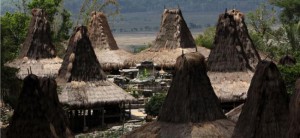The Norwegian Embassy in Jakarta will provide approx. $2 million dollars to the Sumba “Iconic Island Initiative” to help scale up access to energy on the island using mostly renewable energy resources.
The Sumba Iconic Island Initiative is led by Indonesia’s Ministry of Energy and Mineral Resources with support from HIVOS, a Dutch non-governmental organization, and the Asian Development Bank (ADB).
The Indonesian Ministry of Energy and Mineral Resources (MEMR), is leading this ambitious programme which will demonstrate that the development of a poor and isolated island can be powered by 100% renewable energy.
Hivos introduced the ‘Sumba Iconic Island’ initiative in 2010 with the support of the Indonesian Ministry of Energy and Mineral Resources. The initiative was immediately welcomed by Sumba’s local government districts, the state electricity company PLN and the provincial government. In 2012 they signed an agreement in which they committed to achieving the Iconic Island goal.
Sumba, which forms part of the province of Nusa Tenggara Timur, was chosen to showcase renewable energy because it is one of the poorest regions in Indonesia. The majority of the 650,000 inhabitants have no access to electricity: in 2010, 70% of the population used kerosene, for lighting and cooking, which is expensive, highly polluting and extremely unhealthy.
“Renewable energy (wind, hydro, solar and biogas) is the best and most cost-effective solution for people on remote islands such as Sumba,” says Eco Matser, Coordinator Climate, energy and development of Hivos. Dadan Kusdiana, Director of Bio Energy of MEMR adds, “We can achieve the ambitious target of 100% renewable energy by working together with all stakeholders from government, private sector and civil society. That is why a taskforce comprising all these stakeholders has been created and a joint roadmap has been developed.”
“Our main reasons for choosing to support this programme were the co-operation between all stakeholders and the chance to promote development with renewable energy,” says Marianne Damhaug, Minister Counsellor at the Norwegian Embassy. “The Sumba Iconic Island can become a model for other areas in Indonesia and beyond.”
Hivos will use part of the grant to carry out its role as the secretariat of the MEMR-led Sumba taskforce. The rest of the funds will be used to implement renewable energy solutions on the ground, for example solar panels for pumping irrigation water, hydropower for remote communities, energy kiosks to provide solar lanterns and charge mobile phones, and biogas produced from animal dung for cooking and lighting.
The ADB, which joined the initiative in 2013, is providing a team of experts who will develop a least cost energy access plan for the island, identify investment projects, and seek to crowd in additional sources of finance.
Latest development: www.hivos.org/activity/implementation-iconic-island-objectives-sumba-ntt-2012-2013
